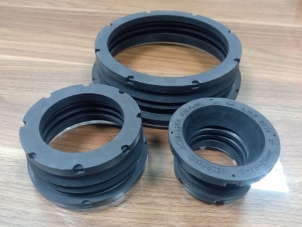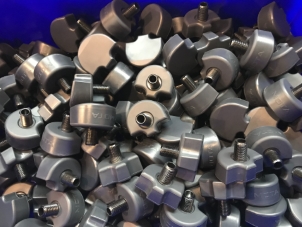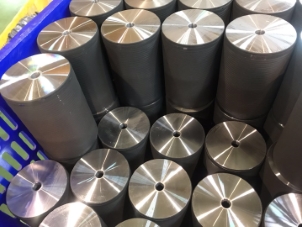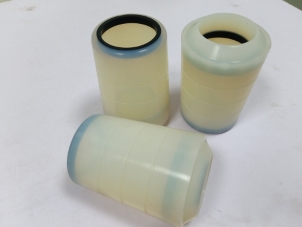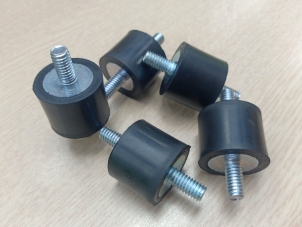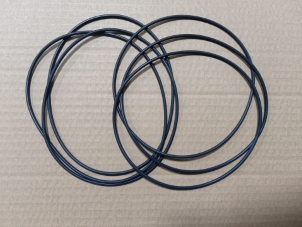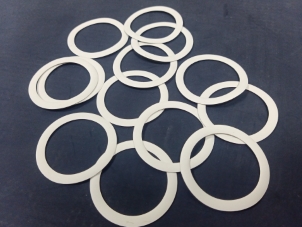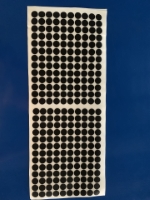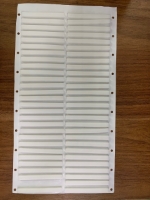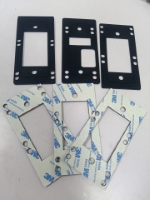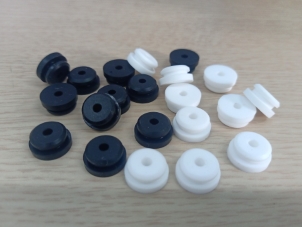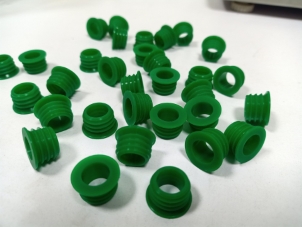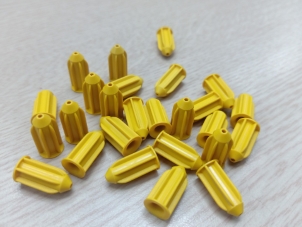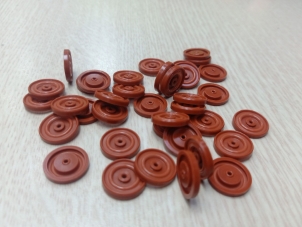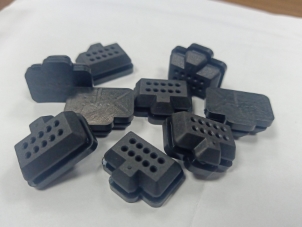Table of Contents
What is rubber molding?
Rubber molding is a reliable method of manufacturing simple rubber parts or components. Rubber molding is an important part of the rubber production industry due to its ability to create parts, assemblies, configurations, and designs that exactly meet application needs. Rubber is the material of choice for many applications due to its unique durability and durability. Rubber can resist damage for a long time without failing. From car tires and pipe seals to shock pads on heavy machinery, rubber can be found everywhere.
Types of rubber molding
Rubber molding is a process of forming rubber into a final product using a mold. The mold applies heat and pressure to the rubber, which makes it vulcanize, or cure.
There are three common types of rubber molding:
Choosing the right type of rubber molding for your application is important to achieve the desired outcome. You need to consider the correct compound and manufacturing process for your product. By doing so, you can ensure optimum performance levels and cost-effectiveness for your rubber product.
What is Injection Molding?
The history of injection molding technology dates back to the early 1960s. It involves injecting a heated rubber compound or material under high pressure into a closed mold. Injection molding heats and applies pressure to the rubber material so that it fills the mold cavity. Injection molding is a labor-saving way of molding rubber parts because it is fully automated, thus reducing labor costs. Today, it has become one of the most effective methods of rubber molding in many situations.
Injection molding technology can use a variety of rubber materials, such as silicone, neoprene, nitrile, and EPDM, allowing manufacturers to produce a variety of molded rubber products. This technology can be used in different situations, especially when producing: large shot volumes, large numbers of small to medium-sized parts, incorporating bonded inserts, achieving tight dimensional tolerances, and manufacturing components where color uniformity or consistency is required. Some examples of parts using injection molding include colored instrument covers, O-rings, drive coupling assemblies, and automotive parts.
Advantages of Rubber Injection Molding
- Efficient and automated: Injection molding is a fully automated process, from the insertion of raw material to the ejection of the final product. This results in significant labor savings and increased efficiency.
- High precision and repeatability: Injection molding produces high-precision parts that are highly repeatable. This is because the process is highly controlled and uses precision molds.
- Complex geometries: Injection molding can be used to mold complex and intricate geometries that would be difficult or impossible to produce using other methods.
- Reduced costs: Injection molding eliminates the need for performing, which can save money on labor costs. It also produces little to no flash, which reduces material waste.
- Fast cycle times: Injection molding has rapid cycle times, which allows for the production of large volumes of parts in a short period of time.
- Recyclable products: The products produced by injection molding are recyclable, which reduces their environmental impact.
- Tighter tolerances and uniform parts: Injection molding can produce parts with tighter dimensional tolerances and greater uniformity than other manufacturing methods.
- Reduced tooling time: Injection molding tooling can be produced relatively quickly, which reduces the time to market for new products.
What is Rubber Compression Molding?
Compression molding is a traditional manufacturing technique that uses heat and pressure to mold thermoset rubber or plastic resin into the desired shape. The rubber or resin material is placed in a heated mold cavity and compressed using a press. The heat and pressure activate the curing process, which results in a permanent change to the material's shape.
Rubber compression molding is a versatile process that can be used to produce a wide range of products, from simple gaskets and seals to complex automotive parts. It is also a relatively low-cost process, making it a popular choice for manufacturing high volumes of parts. The process is reliable and efficient for making large quantities of identical products.
Benefits of Rubber Compression Molding
Compression molding is a cost-effective and simple technology for producing a variety of products from rubber or plastic materials. This process has several advantages, such as:
- Cost-Effectiveness: Compression molding is a relatively low-cost manufacturing process, especially for high-volume production.
- Less expensive tooling: Compression molding tools are generally cheaper to produce than injection molding tools.
- Increased cavity count: Compression molding molds have more cavities than injection molds, which can increase productivity.
- Perfect for larger pieces that need extended curing time: Compression molding is ideal for manufacturing large or complex parts that require extended cure times.
- Accepts all forms of elastomers: Compression molding can be used to mold a variety of elastomeric materials, including natural rubber, synthetic rubber, and silicones.
- Eliminates the need for runners, sprues, or gates: Compression molding requires no runners, gates, or gates, reducing material waste.
- Simplified process: Compression molding is a relatively simple process, which makes it easy to learn and implement.
- Little to no waste: Compression molding produces very little waste, which is beneficial for the environment and can also save money on material costs.
What is Rubber Transfer Molding?
Transfer molding is a popular rubber part manufacturing process. It is a closed mold system using rubber pellets or preformed rubber. Pellets or preformed rubber are placed in a canister located between the top plate of the mold and the plunger. When the plunger is activated, it heats the particles and forces them along the gate and into the mold cavity. The plunger remains in place until the material solidifies and forms the shape of the mold.
Transfer molding is similar to compression molding, but it uses more complex molds and processing methods. This enables the production of parts with more complex geometries and tighter tolerances. Transfer molding is also a more versatile process as it can be used to mold a wider range of rubber materials. It is a good choice for a wide range of applications, from simple seals and gaskets to complex automotive parts.
Advantages of Transfer Molding
- Transfer molding is an economical process that offers low-cost tooling, short cycle times, and high-precision parts.
- Transfer molding can achieve tight dimensional tolerances, accept all kinds of elastomers, and produce multiple parts in each cycle.
- Transfer molding has greater design flexibility that allows for sharp edges and reduces flash.
- Transfer molding is a simple process that only requires a pot, a plunger, and a mold.
Which Type of Rubber Molding Is Right For Your Application?
The best rubber molding process for your application depends on several factors, such as cost, time, volume, material, environment, and batch size. There is no one-size-fits-all solution; each process has its own advantages and disadvantages.
At Jhao Yang, we have 50+ years of experience in the rubber molding industry. Our team of experts can help you choose the right rubber molding process for your application, based on your specific needs and requirements. We are highly skilled and experienced in all types of rubber molding, and we are more than happy to discuss your unique application and its requirements.

